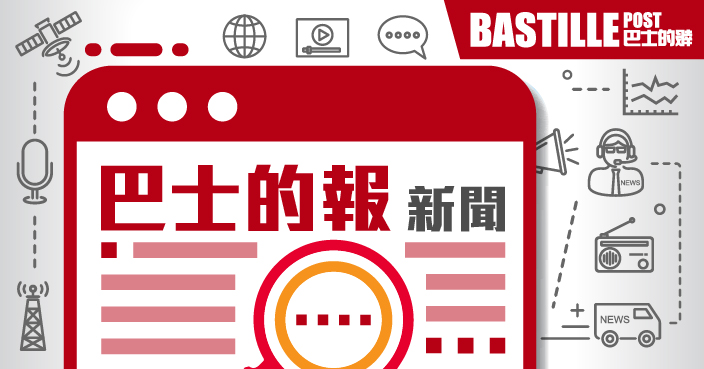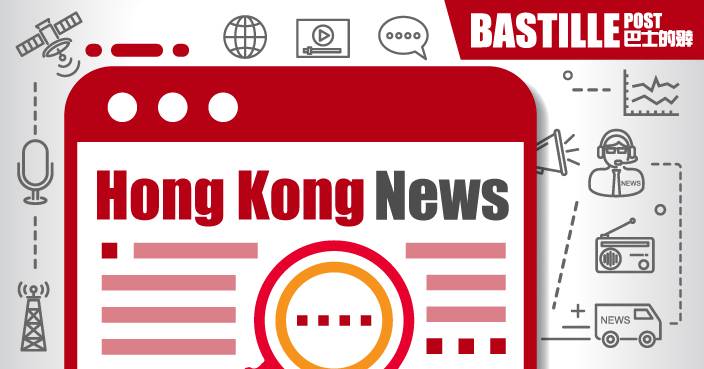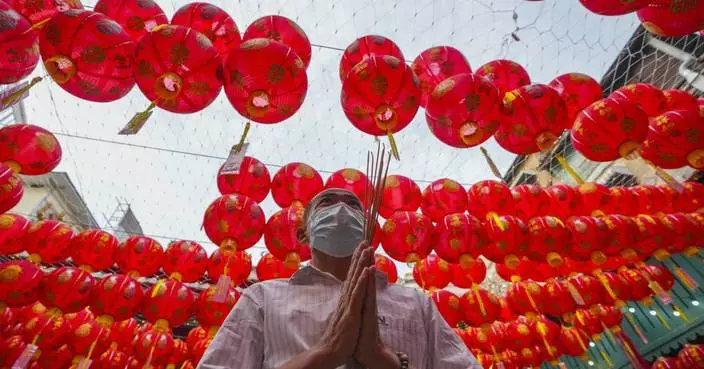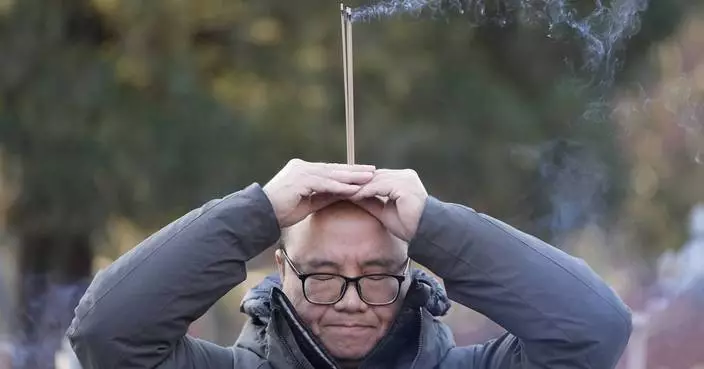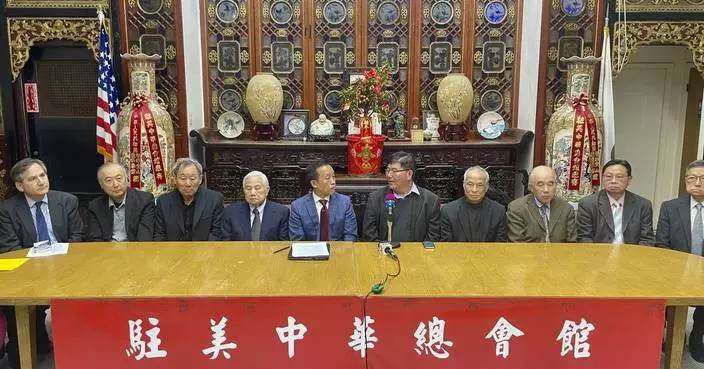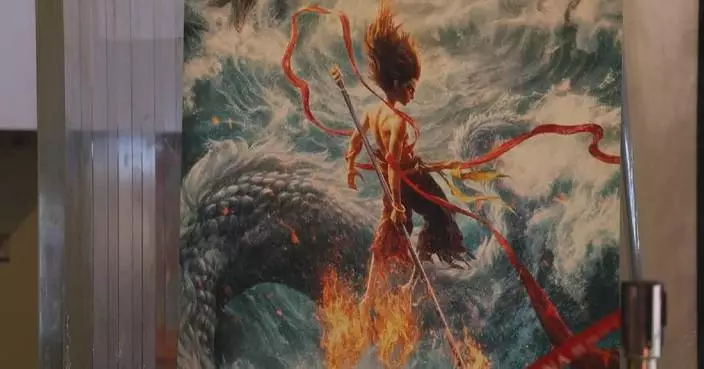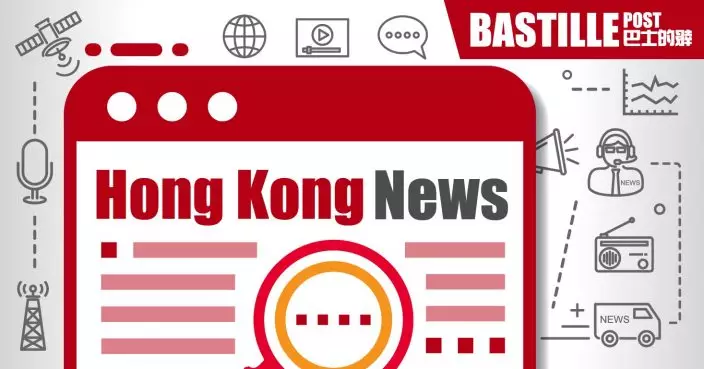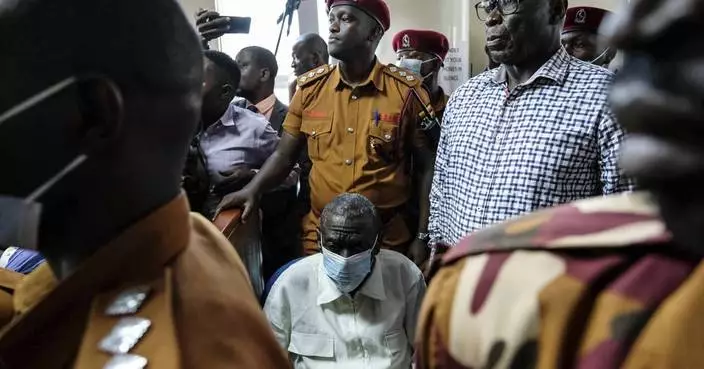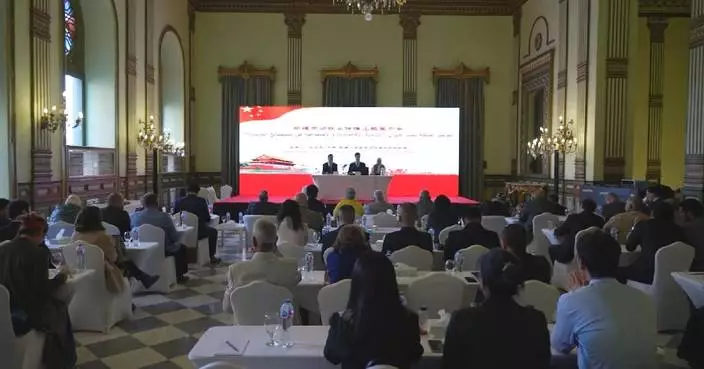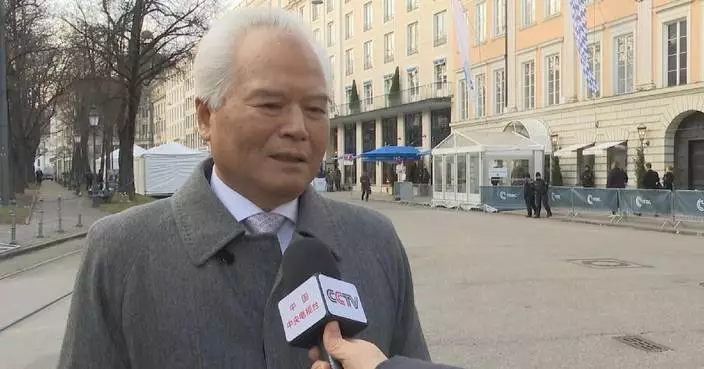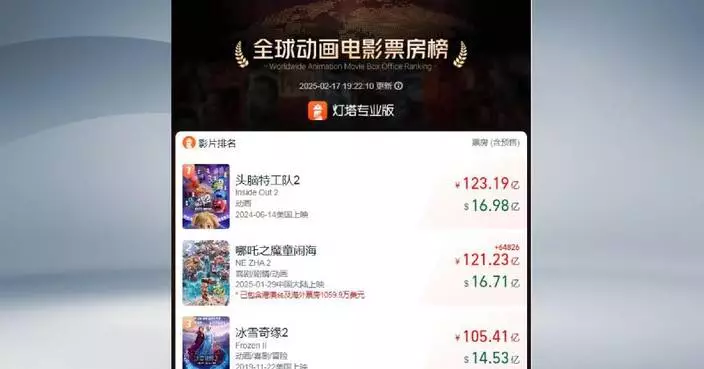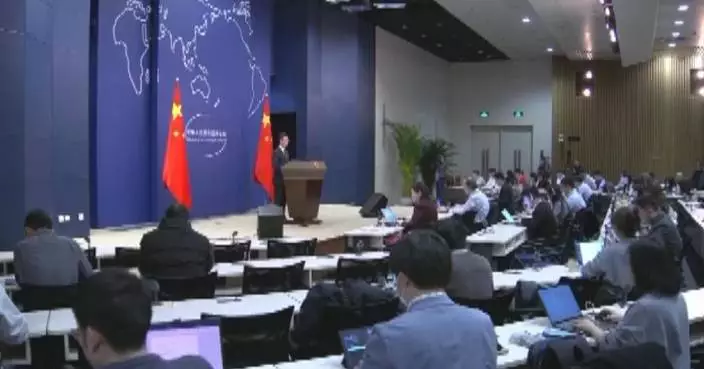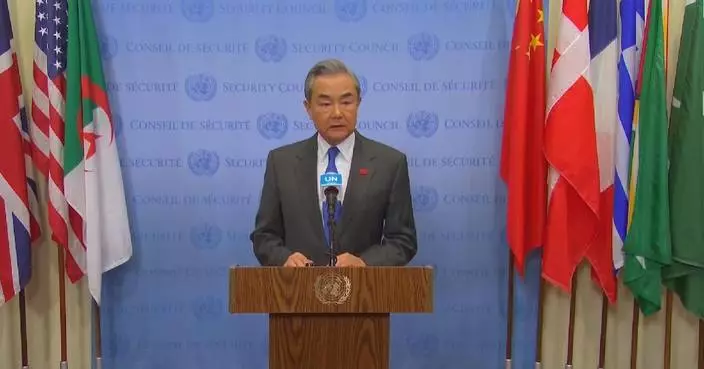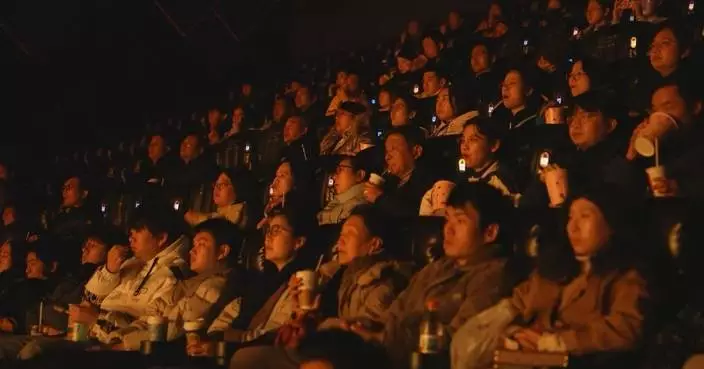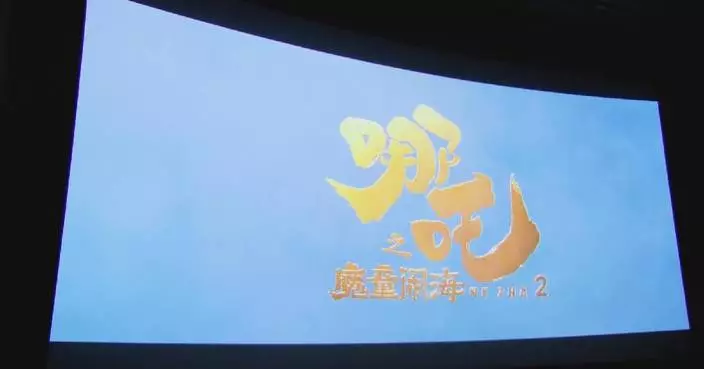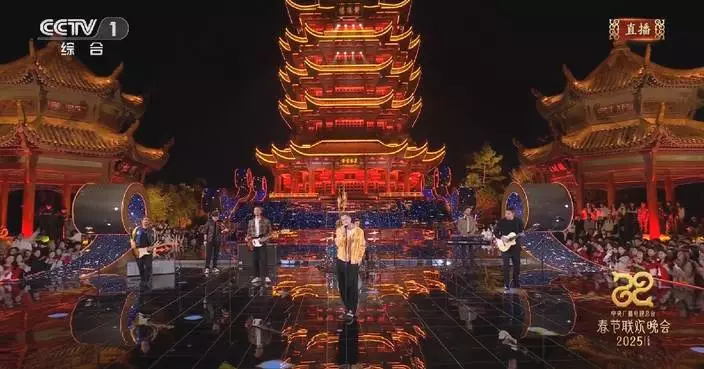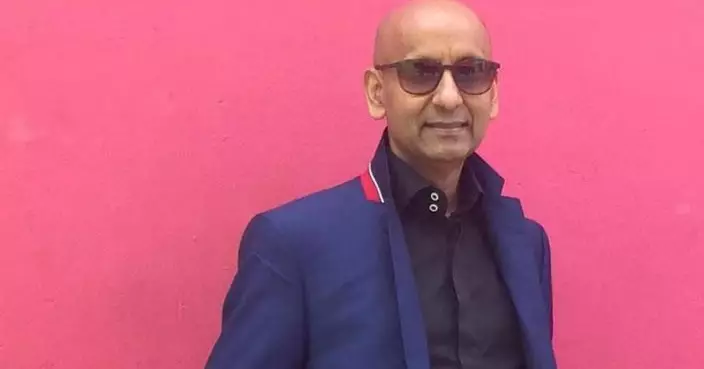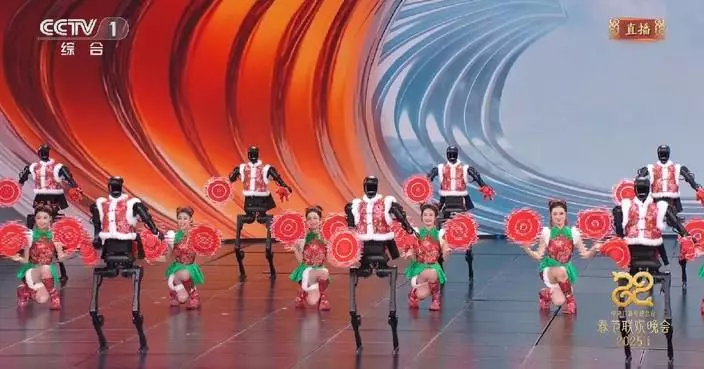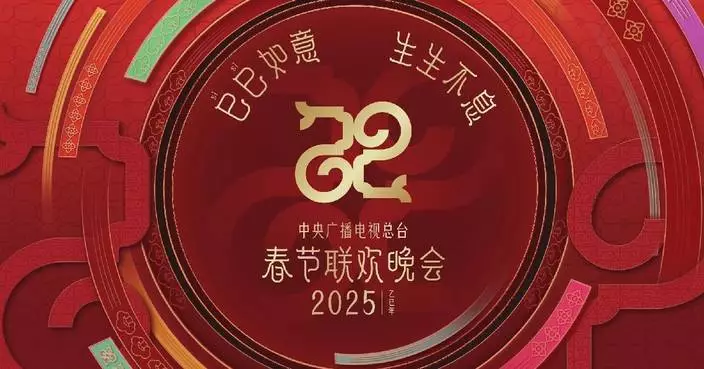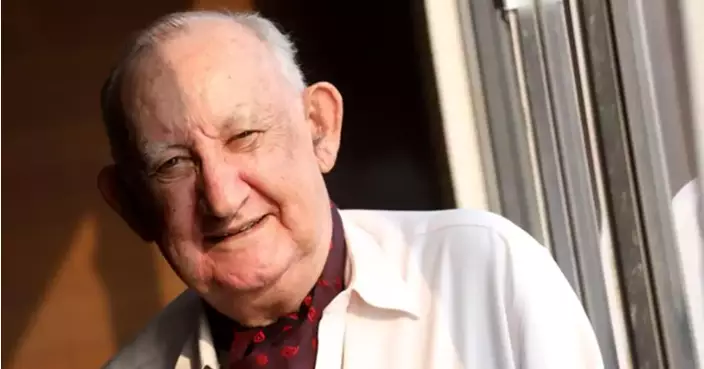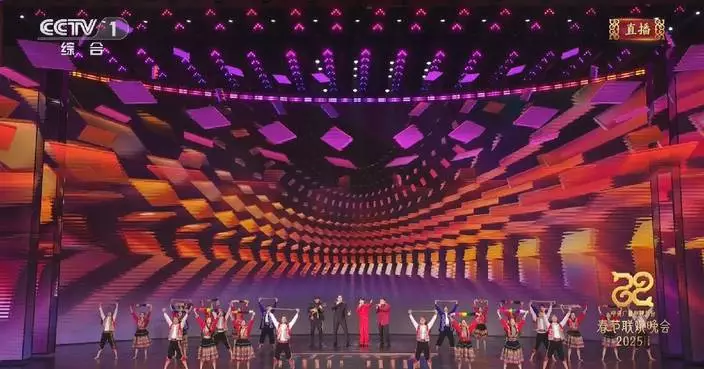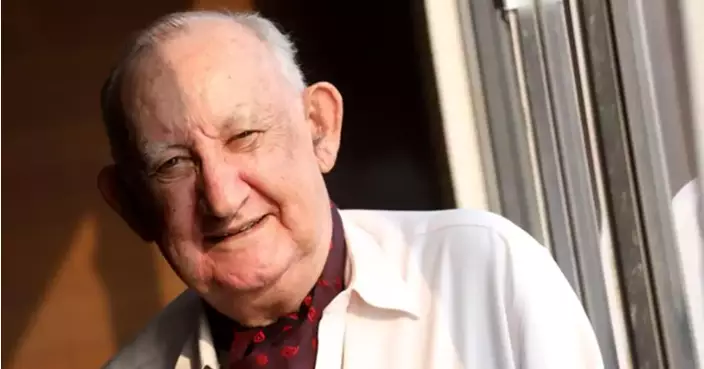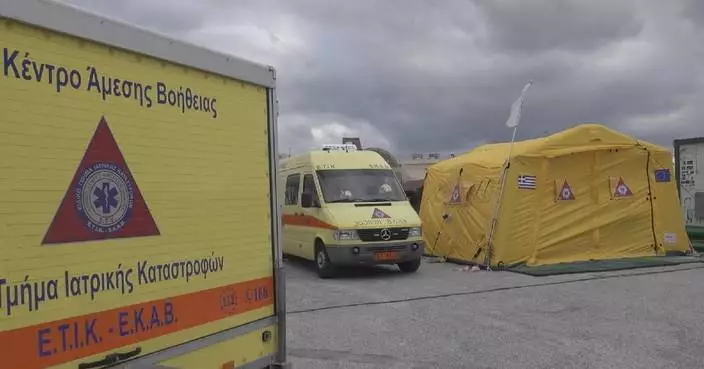Traditional medicine now has legal protection as well as increasing worldwide enthusiasm for its techniques.
Traditional Chinese medicine is a treasure of Chinese civilization. Through thousands of years of inheritance and development, the four traditional diagnosis methods-inspection, auscultation and olfaction, inquiry, and palpation-have been followed by practitioners for countless generations.
Click to Gallery
A woman receives a traditional ironing treatment at a traditional Chinese medicine hospital, named Shao Lin Tang, in Southwest China's Chongqing municipality. Ironing can treat conditions including dizziness, migraine and insomnia. (Photo/China Daily)
A woman receives a traditional massage at a clinic of traditional Chinese medicine in Southwest China's Chongqing municipality. (Photo/China Daily)
A patient receives acupuncture to treat facial numbness at a clinic of traditional Chinese medicine in Southwest China's Chongqing municipality. Chinese acupuncture was added to the United Nations World Intangible Heritage list in 2010. (Photo/China Daily)
Two women experience facial masks made of herbal medicines at Chongqing Traditional Chinese Medicine Hospital in Southwest China's Chongqing municipality. (Photo/China Daily)
A patient receives electrical acupuncture therapy at Chongqing Cancer Hospital in Southwest China's Chongqing municipality. On the wall are images and instructions from famed ancient Chinese doctors, including Hua Tuo, Zhang Zhongjing, Li Shizhen and Sun Simiao. (Photo/China Daily)
An elderly woman receives acupuncture to treat his eye disease at a traditional Chinese medicine research institute in Southwest China's Chongqing municipality. (Photo/China Daily)
A patient receives moxibustion therapy at a traditional Chinese medicine hospital in Southwest China's Chongqing municipality. (Photo/China Daily)
Locals purchase healthy foods at a traditional Chinese medicine market in Southwest China's Chongqing municipality. (Photo/China Daily)
Diarra Boubacar, from Mali, takes the pulse of a patient at the traditional Chinese medicine hospital in the Xindu district of Chengdu in Southwest China's Sichuan province. Boubacar has been a TCM doctor for more than three decades. (Photo/China Daily)
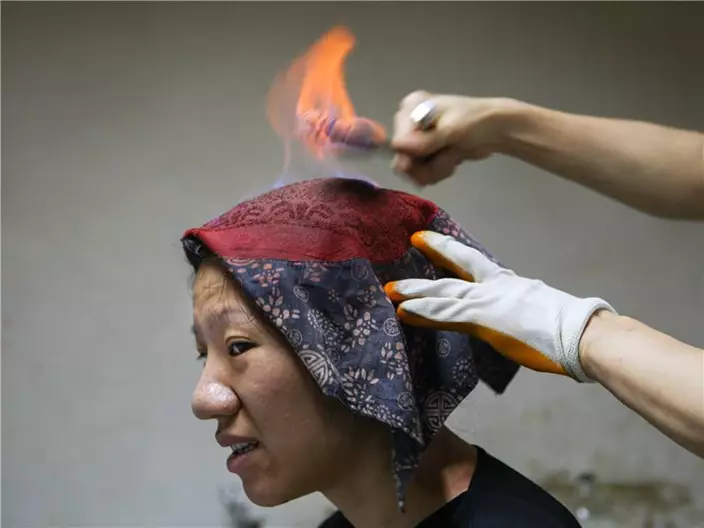
A woman receives a traditional ironing treatment at a traditional Chinese medicine hospital, named Shao Lin Tang, in Southwest China's Chongqing municipality. Ironing can treat conditions including dizziness, migraine and insomnia. (Photo/China Daily)
A report at the 19th CPC National Congress emphasized that China will carry out a comprehensive Healthy China initiative and "we will support both traditional Chinese medicine and Western medicine, and ensure the preservation and development of traditional Chinese medicine."
Traditional Chinese medicine has played a major role in the prevention and treatment of common, frequently occurring, difficult and complicated diseases, as well as major epidemic outbreaks.
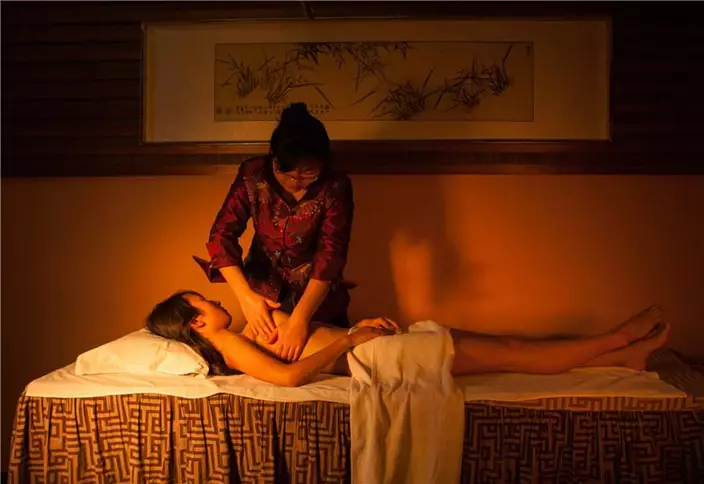
A woman receives a traditional massage at a clinic of traditional Chinese medicine in Southwest China's Chongqing municipality. (Photo/China Daily)
Through various forms of treatment, including herbal medicine, acupuncture, manipulation, massage, cupping, qigong and dietary therapy, traditional Chinese medicine balances yin and yang in patients' bodies to help them recover.
On July 1, China's first Law on Traditional Chinese Medicine was enacted. This is the first time that China has highlighted the important status of traditional Chinese medicine and put forward development plans and supportive measures from a legal aspect. The development of traditional Chinese medicine now has legal safeguards.
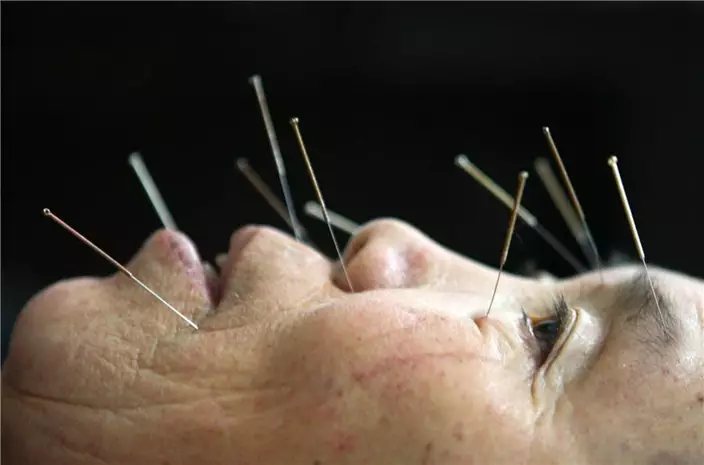
A patient receives acupuncture to treat facial numbness at a clinic of traditional Chinese medicine in Southwest China's Chongqing municipality. Chinese acupuncture was added to the United Nations World Intangible Heritage list in 2010. (Photo/China Daily)
Traditional Chinese medicine, which involves preventive treatment and has strengths and characteristics in preventing and treating modern diseases, is increasingly acknowledged and accepted by countries and medical communities worldwide.
With rapid economic development and the Belt and Road Initiative, Chinese people now enjoy better living standards and are much more aware of their health. All these factors provide new opportunities for the globalization and prosperity of traditional Chinese medicine.
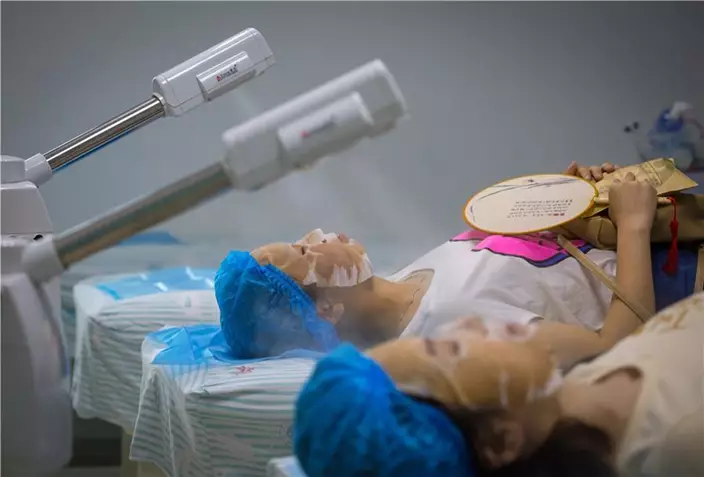
Two women experience facial masks made of herbal medicines at Chongqing Traditional Chinese Medicine Hospital in Southwest China's Chongqing municipality. (Photo/China Daily)
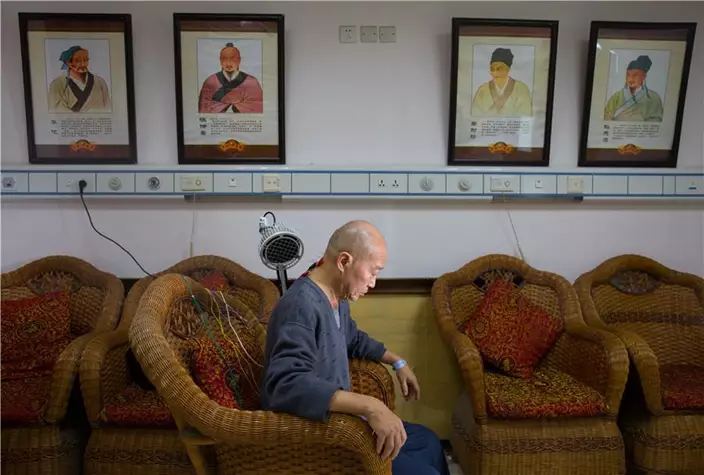
A patient receives electrical acupuncture therapy at Chongqing Cancer Hospital in Southwest China's Chongqing municipality. On the wall are images and instructions from famed ancient Chinese doctors, including Hua Tuo, Zhang Zhongjing, Li Shizhen and Sun Simiao. (Photo/China Daily)
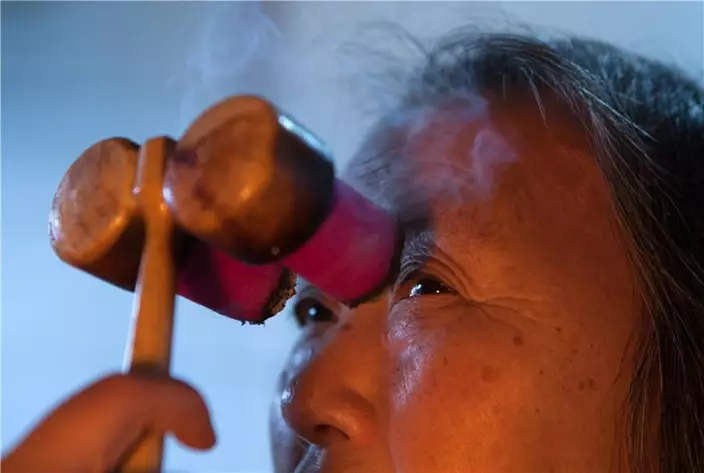
An elderly woman receives acupuncture to treat his eye disease at a traditional Chinese medicine research institute in Southwest China's Chongqing municipality. (Photo/China Daily)
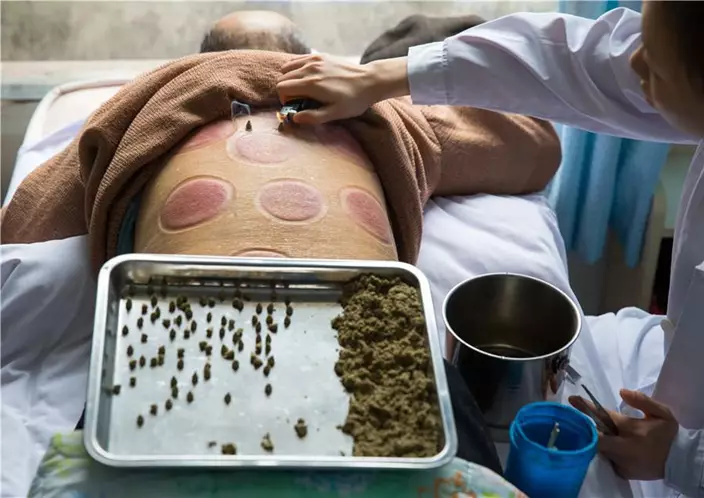
A patient receives moxibustion therapy at a traditional Chinese medicine hospital in Southwest China's Chongqing municipality. (Photo/China Daily)

Locals purchase healthy foods at a traditional Chinese medicine market in Southwest China's Chongqing municipality. (Photo/China Daily)
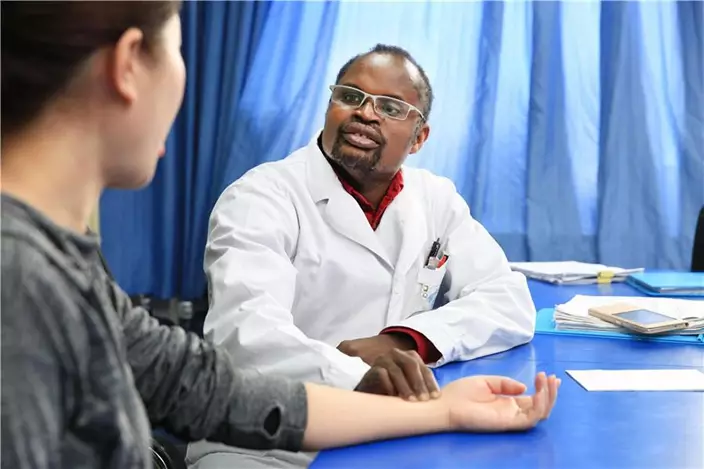
Diarra Boubacar, from Mali, takes the pulse of a patient at the traditional Chinese medicine hospital in the Xindu district of Chengdu in Southwest China's Sichuan province. Boubacar has been a TCM doctor for more than three decades. (Photo/China Daily)
MELBOURNE, Australia (AP) — The Australian and New Zealand militaries were monitoring three Chinese warships moving unusually far south along Australia’s east coast on an unknown mission, officials said Thursday.
The Australian government revealed a week ago that the warships had traveled through Southeast Asia and the Coral Sea and were approaching northeast Australia.
Defense Minister Richard Marles said Thursday that the Chinese ships — the naval frigate Hengyang, cruiser Zunyi and replenishment vessel Weishanhu — were “off the east coast of Australia.”
Defense officials did not respond to a request for comment on a Financial Times report that the task group from China's military, the People's Liberation Army, was 150 nautical miles (278 kilometers) east of Sydney.
“There is no doubt that this is, not unprecedented, but an unusual event,” Marles told Sky News television.
Marles said Australian navy ships and air force planes were monitoring the Chinese ships’ movements through international waters that are in Australia's exclusive economic zone, the area beyond its territorial waters where a nation has exclusive economic rights.
“They’re entitled to be where they are; Australia is also entitled to be prudent and we are monitoring very closely what the activities of the task group are,” Marles told reporters.
“What we will do whenever this mission is over on the part of the Chinese task group is engage in a full assessment of what the Chinese were seeking to achieve in respect of this mission,” he added.
In Beijing, China’s foreign ministry spokesperson Guo Jiakun was asked at a media briefing on Wednesday about the Chinese warships' location and replied he was not aware of the situation. The Chinese Embassy in Australia did not immediately respond to a request for comment Thursday.
Marles said Australia had engaged with its nearest neighbor Papua New Guinea over its response because the Chinese had traveled around the South Pacific island nation’s coast on their way to Australia’s exclusive economic zone.
Australia was also “working very closely” with New Zealand, which is separated from the Australian east coast by the Tasman Sea, he said.
New Zealand’s military was also monitoring the Chinese ships by sea and air “in coordination with Australia,” New Zealand Defense Minister Judith Collins said in a statement.
“We have not been informed by the Chinese government why this task group has been deployed into our region, and we have not been informed what its future plans are,” she added. “We will continue to monitor these vessels.”
Jennifer Parker, an expert associate of Australia’s National Security College and a former Australian naval officer, said Chinese warships rarely traveled so far south along the nation’s east coast.
“This is part of a broader power projection from the PLA-Navy and we should expect to see more of this in the Pacific and in the Indian Ocean,” Parker said.
The Chinese deployment comes as the head of U.S. Indo-Pacific Command Adm. Samuel Paparo visits Australia this week.
Parker said the timing was likely coincidental given the Chinese deployment would have been planned well in advance and the United States doesn’t release information about their senior officers’ travel until close to the visit.
“Without knowing exactly where the ships are going, the point of this deployment, I think, is to demonstrate to Australia that they have the capability to come down and operate in our maritime domain,” Parker said.
Prime Minister Anthony Albanese told a news conference he was not worried by reports of Chinese warships off Sydney.
“The Chinese naval ships are complying with international law, but as we do, we are monitoring the situation and observing what is going on, as you would expect,” Albanese said.
Three Chinese warships visited Sydney Harbor in 2019. But their voyage had been approved by the Australian government.
Australia’s diplomatic and trade relations with China have improved in recent years, but relations between the two militaries are dangerous.
Australia protested what it described as an unsafe interaction last week over the South China Sea where a Chinese fighter is accused of releasing flares that endangered an Australian military surveillance plane.
Guo, the Chinese foreign ministry spokesperson, accused the Australian aircraft of “deliberately” intruding into airspace over the disputed Paracel Islands, which China claims.
Associated Press writer Charlotte Graham-McLay in Wellington, New Zealand, contributed to this report.
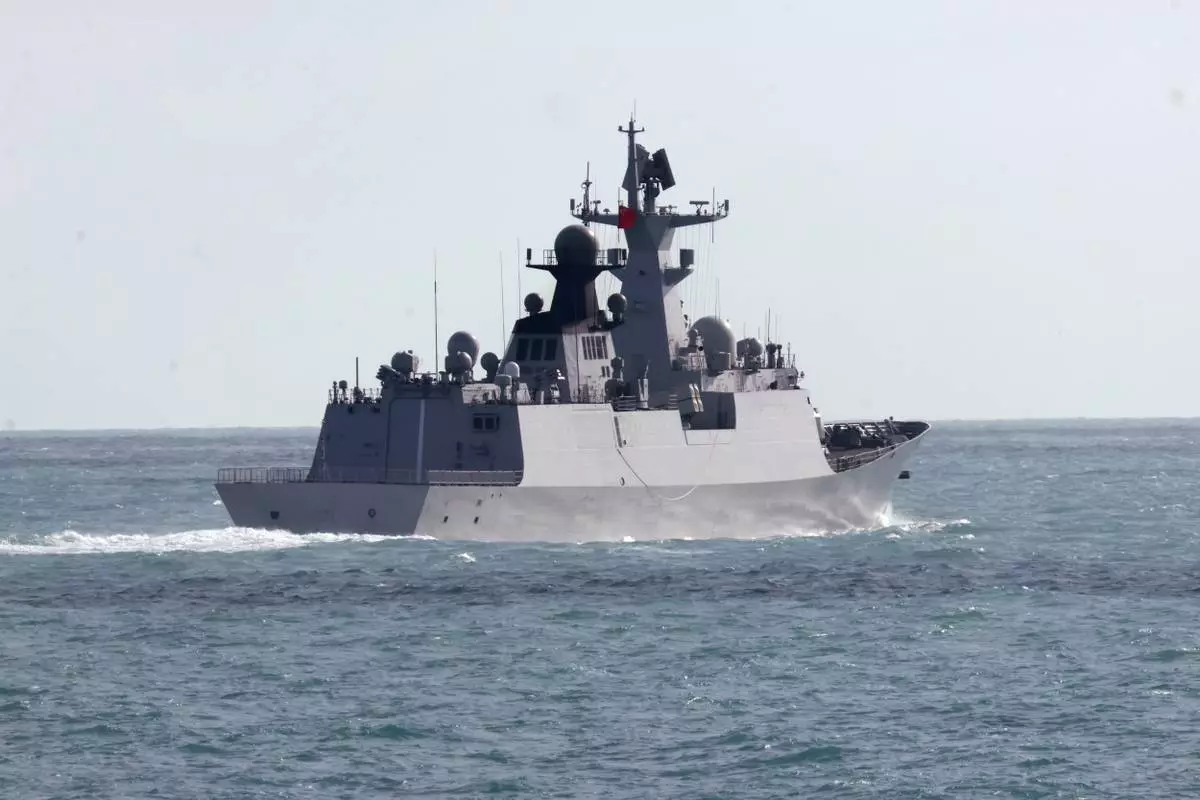
In this photo provided by the Australian Defense Force, the People's Liberation Army-Navy Jiangkai-class frigate Hengyang travels in the Torres Strait off Australia's coast, on Feb. 11, 2025. (Australian Defense Force via AP)
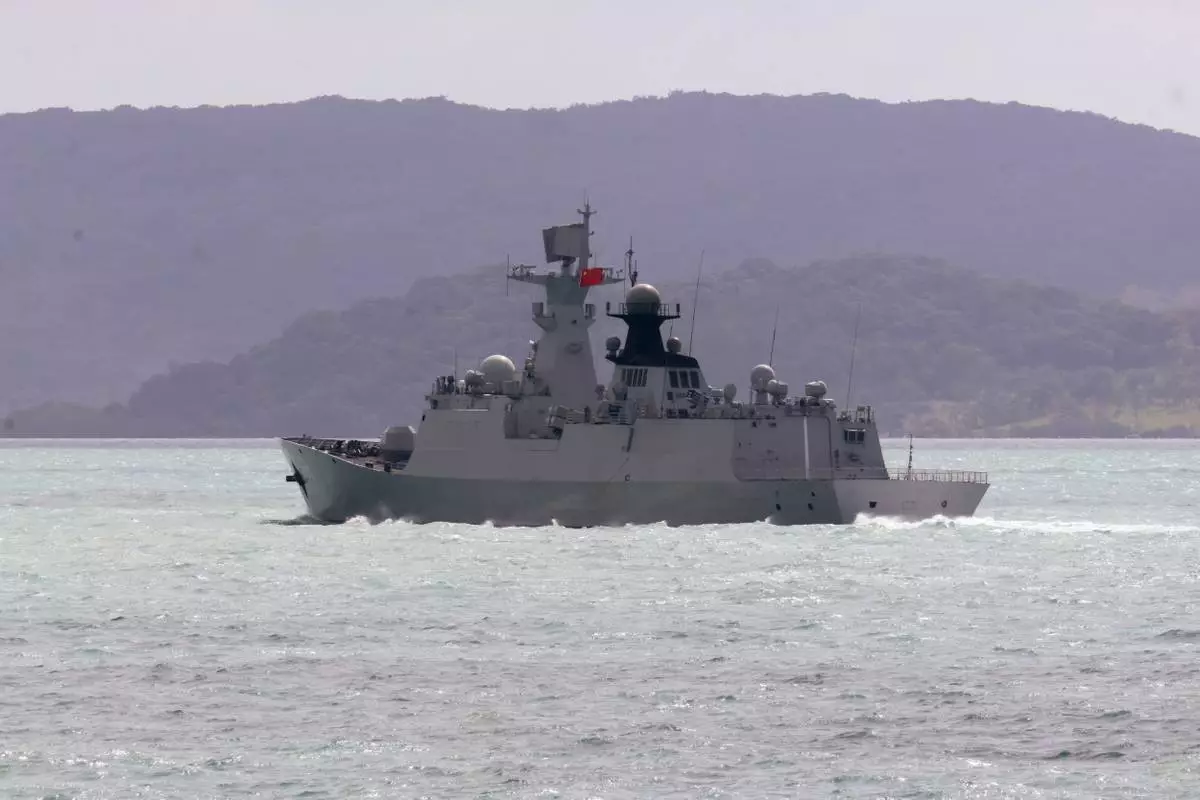
In this photo provided by the Australian Defense Force, the People's Liberation Army-Navy Jiangkai-class frigate Hengyang travels in the Torres Strait off Australia's coast, on Feb. 11, 2025. (Australian Defense Force via AP)









